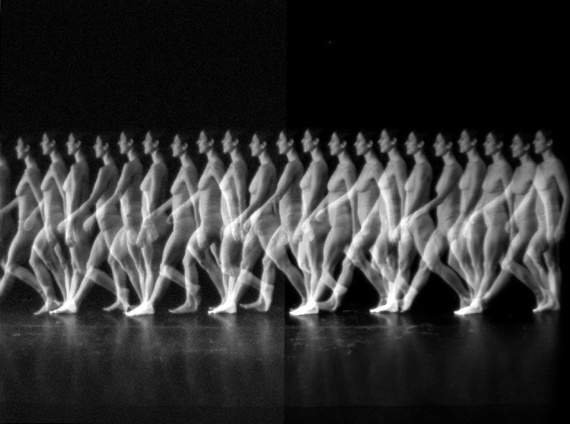Google entries for the search terms "sitting health" outstrip hits for Angelina Jolie, Hilary Clinton, Brad Pitt and climate change. How does something as unsexy as sitting, the absence of activity, get celebrity status?
Sitting has elbowed its way past all other bad behaviors and become public enemy number one. And it should be. Sedentary (from the Latin sedere, sitting) behavior is now a leading cause of illness.
But is this new? Did I miss a meeting? Haven't we been sitting since the dawn of time?
Over the past decade we have gained a greater understanding of inactivity and its negative consequences. The game-changing new story concerns a novel scientifically-based therapeutic intervention: sit less.
This may seem obvious but it is a new approach.
Over the past half century our sedentary time has increased dramatically. Decreased walking and manual labor in conjunction with increased desk-based work and sedentary leisure pursuits (television/computer) have transformed our lifestyle. The proportion of Americans who reported no leisure-time physical activity increased from 19.1 percent to 51.7 percent in women and from 11.4 percent to 43.5 percent in men between 1988 and 2010.
Here are the key findings that change everything.
Most of the reduction in activity has been from the replacement of light physical activity with sedentary behavior, not from decreased moderate to vigorous activity. Until recently, the sole focus of health campaigns has been on increasing moderate to vigorous physical activity.
The Centers for Disease Control and Prevention currently recommends 150 minutes of moderate physical activity per week. This sends a misleading message.
The distinction of time spent sitting and time spent exercising is essential. The negative health consequences of sedentary behavior appear to be independent of moderate to vigorous physical activity. A growing body of data suggest that exercise will not keep us healthy if we leave the gym and sit for prolonged periods of time. It appears to be more important to move throughout the day than have regular bouts of exercise.
And don't think this is just about being overweight or obese. Normal weight is not protective against the ravishes of prolonged sitting and in no way means you're healthy.
The pioneering work on the relationship between movement and health was done in the early 1950s by British researcher, Dr. Jeremy Morris. In seeking to determine whether there was an association between the type of work people do and heart disease, he stumbled upon groundbreaking data. Morris combed through the health records of 31,000 bus drivers and conductors in London. (Think double decker buses with conductors climbing stairs all day and drivers sitting at the wheel.)The conductors had significantly less heart disease than the drivers. The only variable that consistently distinguished one group from the other was activity level.
Here's the bottom line.
The bad news:
Daily hours of sedentary time is correlated with risk for cardiovascular disease, diabetes, certain cancers and premature mortality, independent of exercise patterns.
Less than five percent of adult Americans meet the recommended level of physical activity.
More leisure time is spent watching television than any other activity (in minutes/day: TV-279, Tablet-163, Online-159, Smartphone/non-voice-134). Nothing in the millions of years of human history has been as passive, as available, as addictive and as detrimental to our health.
The good news:
While moderate to vigorous physical activity is good for you, it may be possible to reverse many of the consequences of sedentary living with minimal effort.
Even short frequent interruptions of long stretches of sitting improve insulin sensitivity and glucose levels.
The new focus on decreased sedentary time as opposed to increased moderate to vigorous physical activity is more attainable.
Rather than having to go from neutral (sedentary behavior is more akin to Reverse as metaphor) to third gear, we simply need to get into First gear more often.
So, how much sitting is too much sitting?
A recent gathering of experts recommended initially working toward at least two hours of walking/standing during the work day, eventually progressing to 4 hours/day. Studies have demonstrated a significant decrease in risk with with two or more hours of standing/walking per day. The greatest risk reduction was observed in those accumulating four or more hours of of standing/walking per day. The risk reduction in cardio-metabolic and ergonomic risk was reflected by increased energy expenditure, lower glucose and insulin levels, improved muscle function and decreased joint pain.
The new science of sedentary physiology tells an old cautionary tale. We are ill equipped for leisure despite our appetite for it. Evolution crafted a human that excels at solving problems, meeting challenges and learning new things. We feel best when forced to focus and tap our skills in order to achieve a goal.
History suggests that a society relies on passive leisure when it can no longer provide meaningful work and communal life for its citizens. Bread and circuses. The less engaging the life, the greater the drive toward the artificial stimulation of television, hypersexuality, overeating, alcohol, drugs or gambling.
Move more and bring your skill set from work to the precarious arena of play.
